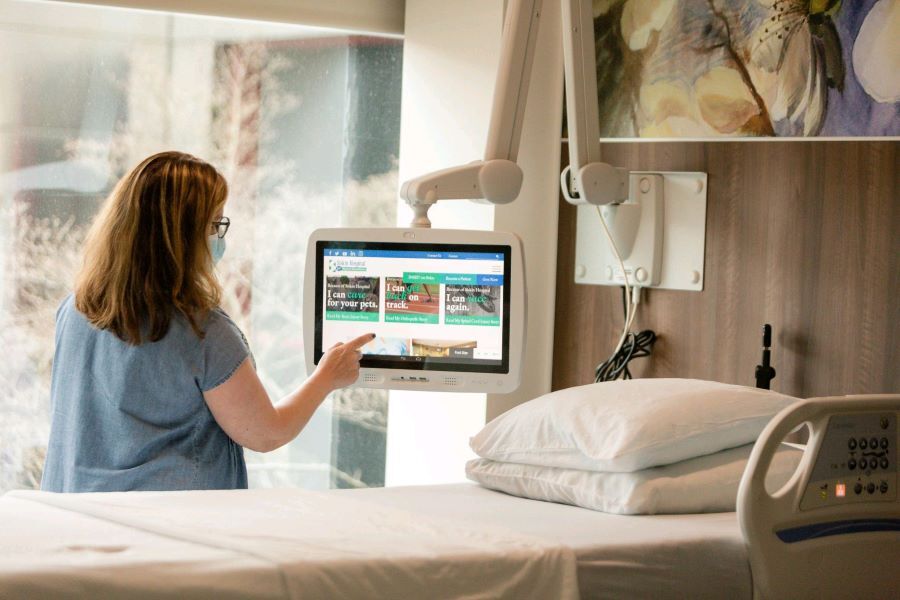Healthy Holiday Habits – Tips for Patients and Senior Residents
Part 3 - Holidays in Healthcare The holiday season is often filled with indulgence and relaxation, but for patients and senior living residents in...

In recognizing the risks associated with patient falls and the potential for severe injuries, hospitals play a pivotal role in ensuring patient safety. The Agency for Healthcare Research and Quality reveals that between 700,000 and one million people in the United States fall in hospitals annually, with research suggesting that almost one-third of these incidents can be prevented.
The impact of falls has become more pronounced during the pandemic, attributed to factors such as staffing shortages, declining mental health conditions, and delays in addressing non-Covid related medical issues. Falls continue to be the most frequently reported sentinel events, making it imperative for healthcare facilities to prioritize. Facilities with higher error rates or poor health outcomes may face penalties and reduced reimbursement rates from both government and private health insurance companies.
Beyond the immediate threats to patients, such as hip fractures, broken bones, and traumatic brain injuries, falls also prolong the recovery process and result in substantial financial costs. Annual medical care expenses related to falls are estimated at a staggering $50 billion.
Amid competing priorities, such as addressing the reason for admission and operating in high-stress environments, fall prevention often gets overlooked or forgotten. This highlights the significance of designing a quality improvement program, emphasizing the need for an interdisciplinary approach to care.
Outlined below are three best practices to incorporate into your facility's fall prevention program.

Screening patients for fall risk factors is an essential first step in designing a fall intervention program. While anyone can fall, determining if a patient is more prone to falling helps the care team pay special attention to those with a higher risk. Understanding the underlying causes that could contribute to a patient’s risk and implementing specific actions or interventions is crucial in preventing falls.
For example, these tests can reveal if a patient is more prone to falling at night or after taking certain medications. Fall risk assessments should be conducted during the admission process, after transfer to a new unit, and, of course, after a fall.
Various fall risk assessment tools are available, screening for common factors such as:

Ensuring patients remain engaged in various activities during their hospital stay has multiple benefits. Aside from promoting good mental health and fostering a positive patient experience, providing entertainment can help patients stay occupied, reducing the likelihood of wandering and falling incidents.
Interactive Touchscreen TVs are an excellent option for patient entertainment. Beyond standard television, these intuitive technologies offer a range of features and applications to keep patients engaged and in good spirits. Streaming services, music, games, and access to educational resources are just a few features they provide. Additionally, these TVs assist care teams and staff by giving patients access to health portals, meal ordering, surveys, and more.
Encouraging patients to perform exercises while lying down or sitting in the hospital bed is another way to keep them engaged without limiting mobility. An occupational or physical therapist can develop an exercise program tailored to each patient’s needs and range of motion, incorporating movements such as leg lifts, hip raises, and bicep curls. This helps safely build strength and improve balance for a faster recovery process.

Implementing safety rounds on patients at high risk of falls, alongside routine hourly check-ins, is a highly impactful strategy in fall prevention. While hourly rounds focus on immediate patient needs, safety rounds consider potential fall hazards and environmental factors, such as wet or slippery floors, obstacles in walkways, or poor lighting.
Safety rounds involve a member of the care team focusing on the '4 P’s', which include assessing the patient's pain levels, evaluating their bed position, and addressing personal needs such as restroom visits. Personal belongings and assistive devices should also be within easy reach of the patient.
Research indicates that when nurses conduct purposeful hourly safety rounds, patient satisfaction increases, call light usage decreases, and there are improved care outcomes. By dedicating specific time to check in with patients and attend to their individual needs, healthcare providers establish a strong rapport for a more supportive and patient-centered care environment.

A comprehensive fall prevention program that incorporates patient screening, engagement strategies, and regular safety rounding is crucial for mitigating the risks associated with falls in hospital settings. By adopting these best practices, healthcare facilities can enhance patient safety, improve outcomes, and reduce the financial burden associated with fall-related injuries.

Part 3 - Holidays in Healthcare The holiday season is often filled with indulgence and relaxation, but for patients and senior living residents in...

Achieving a balance between delivering an exceptional patient experience and managing budget constraints is an ongoing challenge in the healthcare...

Patient-centered care brings patient engagement and personal involvement in care to a new level. When facilities try to implement patient-centered...